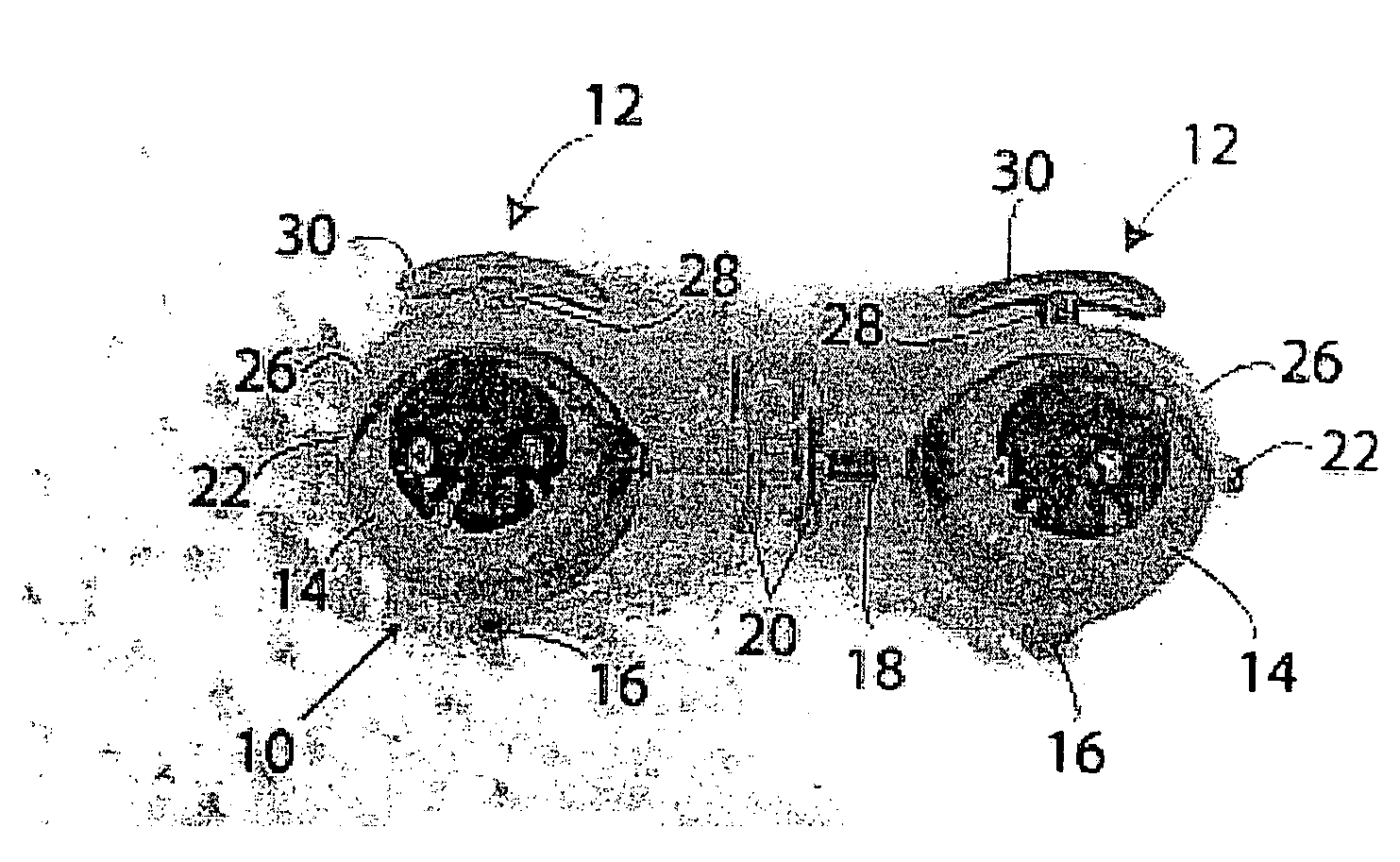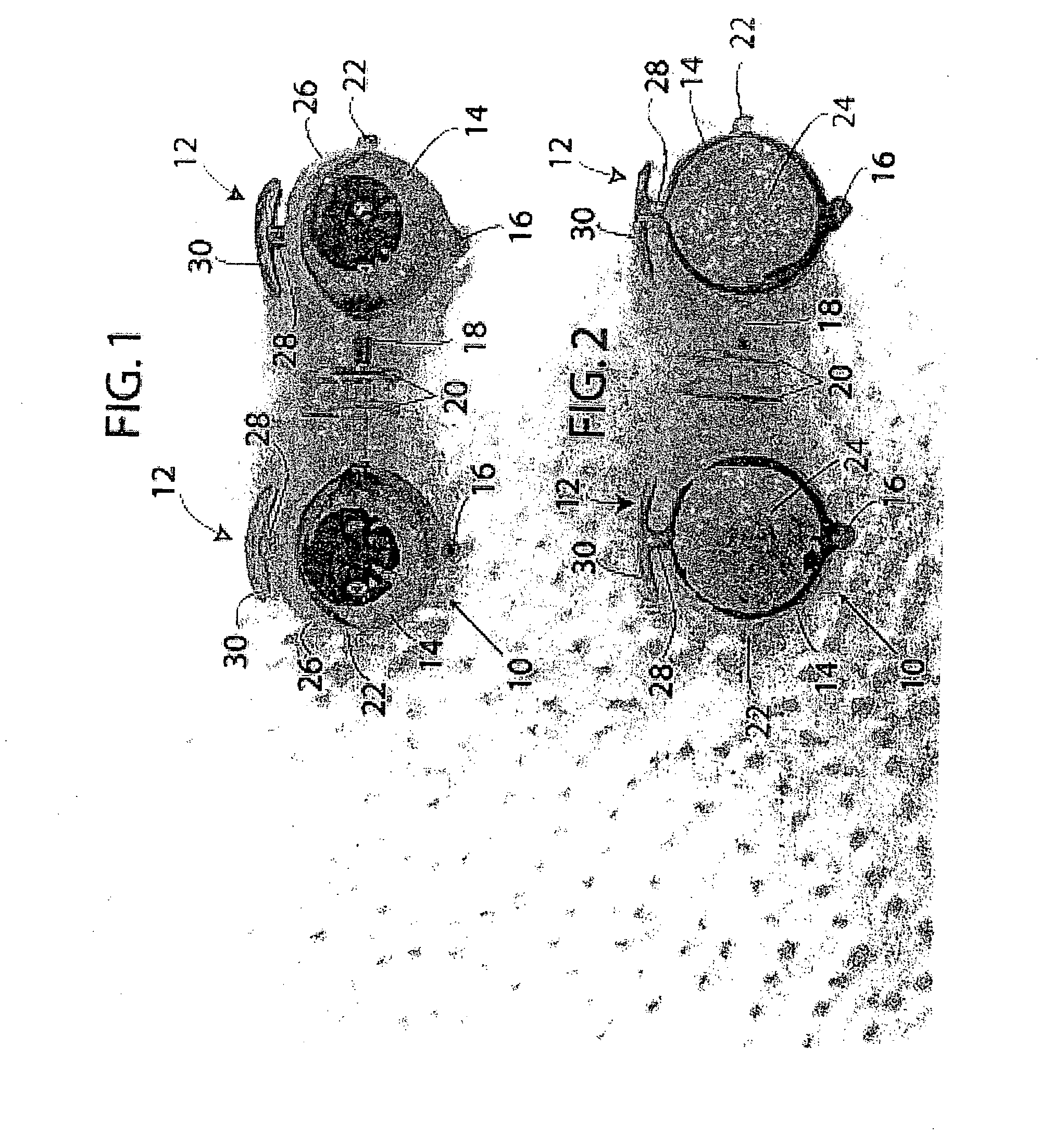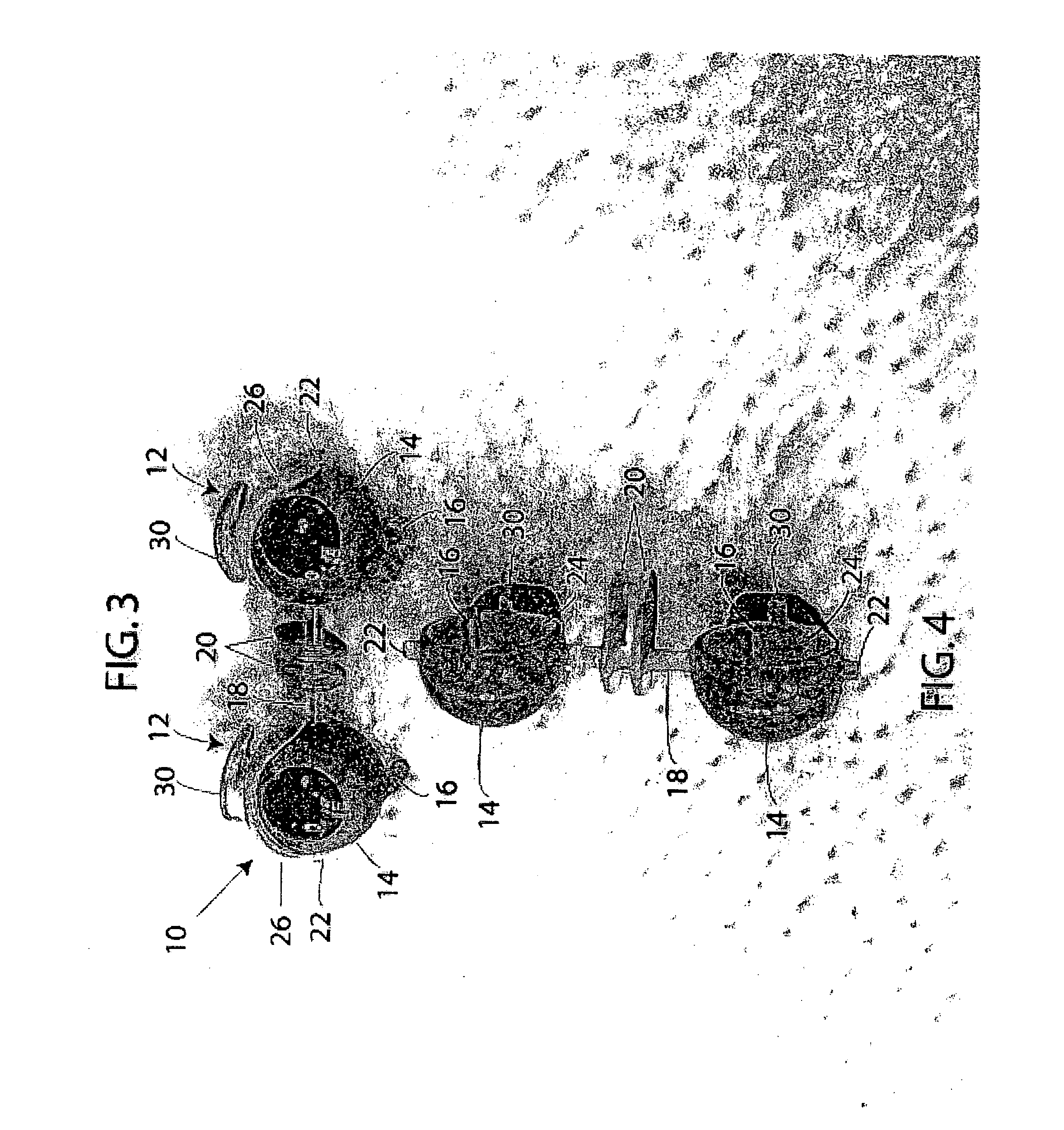Artificial eye assemblies
a technology of eye assemblies and eyeglasses, applied in the field of eyeglasses, can solve the problems of inability to immediately adapt inability to guarantee aesthetic consistency, and inability to meet customer demands, etc., and achieve the effect of ensuring aesthetic consistency
- Summary
- Abstract
- Description
- Claims
- Application Information
AI Technical Summary
Benefits of technology
Problems solved by technology
Method used
Image
Examples
Embodiment Construction
[0028] One embodiment of an artificial eye assembly 10 suitable for use in life-like plush dolls according to the present invention is illustrated in FIGS. 1-4. With reference first to FIGS. 1 and 2, one embodiment of the artificial eye assembly 10 includes an attached pair of spherical bowl-shaped members 14 each of which further includes a pupil and an iris which can either be painted or positioned within the spherical bowl-shaped member 14 to provide a realistic appearance.
[0029] As shown in FIGS. 1-4, the spherical bowl-shaped members 14 represent a pair of eyeballs. This spherical bowl-shaped member 14 is preferably made out of plastic, resin, or the like. However, one skilled in the art would understand that the spherical bowl-shaped member 14 could be made out of many other materials such as glass. Regardless of the type of material used, the described embodiments utilize low cost, transparent polymer, plastic or resin materials. These products are preferred because they pro...
PUM
 Login to View More
Login to View More Abstract
Description
Claims
Application Information
 Login to View More
Login to View More - R&D
- Intellectual Property
- Life Sciences
- Materials
- Tech Scout
- Unparalleled Data Quality
- Higher Quality Content
- 60% Fewer Hallucinations
Browse by: Latest US Patents, China's latest patents, Technical Efficacy Thesaurus, Application Domain, Technology Topic, Popular Technical Reports.
© 2025 PatSnap. All rights reserved.Legal|Privacy policy|Modern Slavery Act Transparency Statement|Sitemap|About US| Contact US: help@patsnap.com



